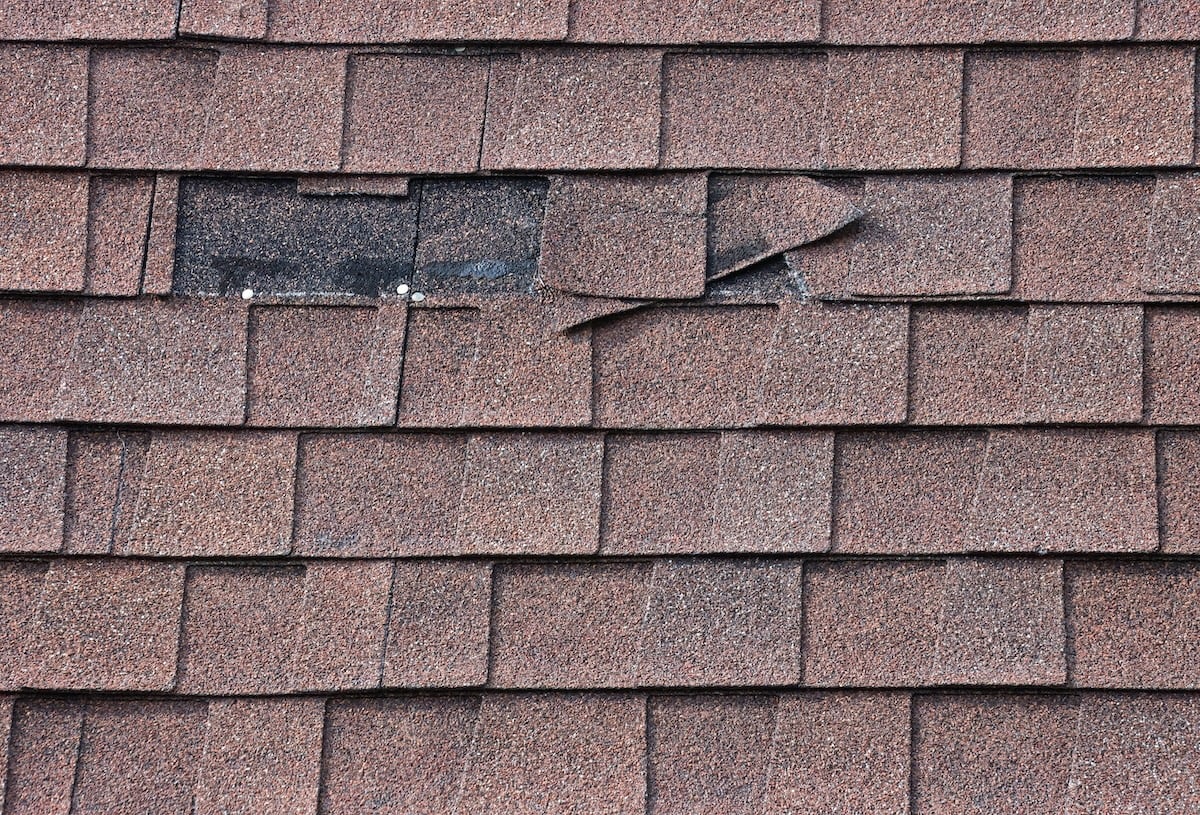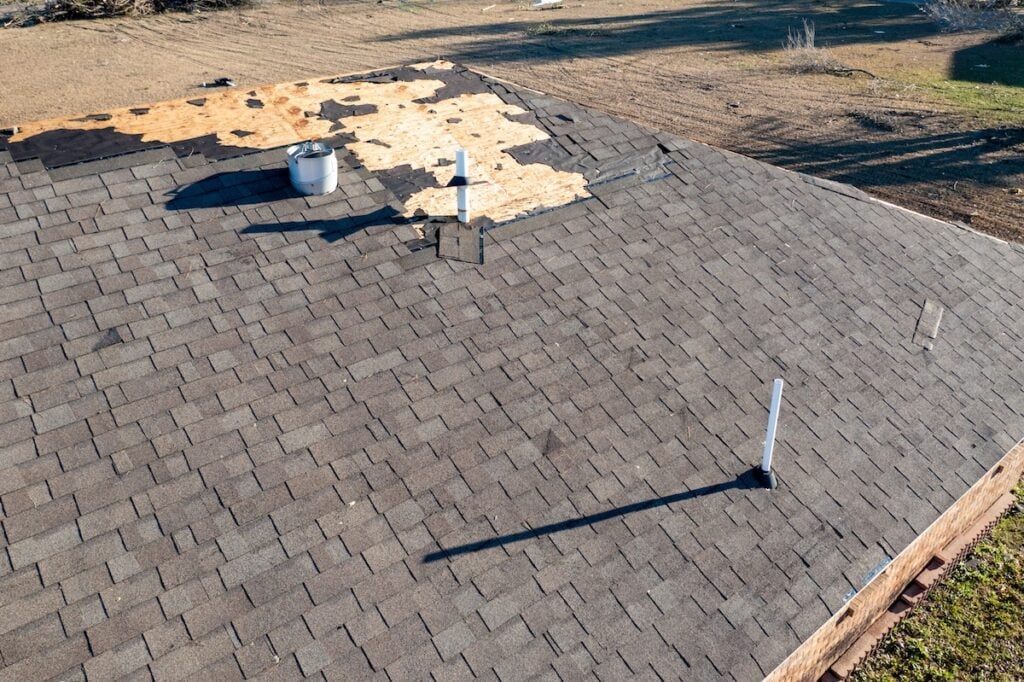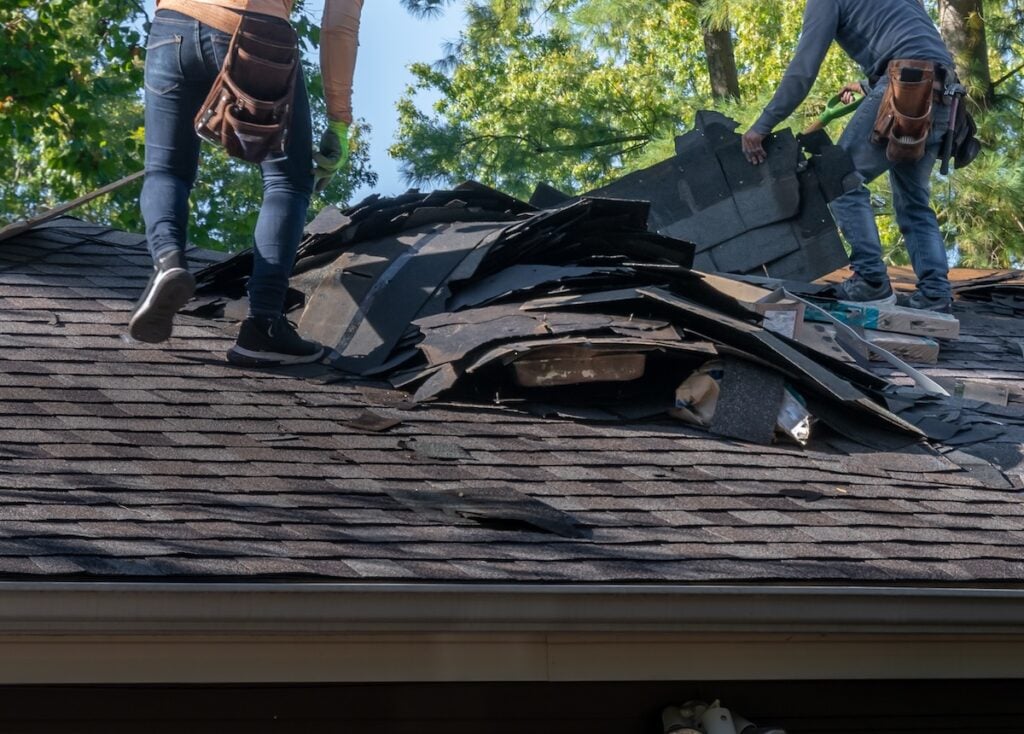
6 Main Signs Of Wind Damage To Roof Structure
After a major storm rolls through, it’s important to inspect your home for wind damage to roof structures—even if everything looks okay from the ground. High winds can cause both visible and hidden issues that, if left unchecked, can lead to costly leaks, structural weakening, and even full roof failure.
In this blog, you’ll learn:
- Top signs of wind-related roof damage to look for after a storm
- How wind affects different roofing materials and components
- When to call in a professional for inspection or repairs
If you live in Texas, where spring storms and hurricane-season winds are common, early detection is key to protecting your home.
💨 Why Wind Damage Is a Serious Threat to Texas Roofs
Texas roofs face a wide range of weather hazards, but wind is one of the most frequent—and most damaging. Whether it’s 40 mph gusts during a thunderstorm or 100+ mph hurricane winds near the coast, strong air pressure can:

- Lift or remove shingles
- Tear off flashing or ridge caps
- Push water underneath the roof layers
- Cause structural shifts in the decking or trusses
Because wind doesn’t always leave obvious damage, knowing what to look for after a storm can prevent major problems down the line.
⚠️ 7 Main Signs of Wind Damage to Roof Structure
Here are the most common signs that wind has compromised your roof or its underlying support system.
1. Missing or Lifted Shingles
- What to look for: Bald spots on the roof, exposed underlayment, or shingles flapping in the wind
- Why it matters: Shingles are your first line of defense against rain and UV exposure. Even one missing shingle can allow water to enter the roof system.
- What to do: Have a roofer inspect for loose or unsealed shingles—especially at the roof edges, ridges, and valleys where wind damage is most likely.
2. Creased or Curled Shingles
- What to look for: Shingles that are bent, folded, or appear warped along their length
- Why it matters: This usually means the wind has lifted the shingle and broken its seal, leaving it vulnerable to blow-off or water intrusion.
- What to do: Damaged shingles should be replaced, and nearby areas should be inspected for further weakness.
3. Leaky Ceilings or Attic Moisture
- What to look for: Water stains on ceilings or walls, musty odors in the attic, or visible drips after rain
- Why it matters: Leaks are often caused by damage to the roof’s protective layers—not always visible from the outside. Wind-driven rain can force its way under shingles or roof vents.
- What to do: A roofing contractor can trace the source of the leak and inspect for wind-damaged components like underlayment or decking.
4. Exposed or Damaged Roof Decking
- What to look for: If entire patches of shingles are missing, the wooden decking may be visible
- Why it matters: The decking forms the foundation of your roof. If it’s exposed or soft from water saturation, the entire roof structure could be compromised.
- What to do: Soft spots or exposed areas should be addressed immediately. In some cases, partial re-decking is required.
5. Sagging Roofline or Uneven Appearance
- What to look for: A noticeable dip in the ridgeline, lopsided slopes, or areas that appear sunken
- Why it matters: Wind pressure can shift or crack the internal trusses or rafters. This is a serious structural issue that affects the integrity of your entire home.
- What to do: A roofing expert should assess the structure. Sagging could indicate hidden framing damage or water weight from previous leaks.
6. Granule Loss or Gutter Debris
- What to look for: Excess granules from asphalt shingles collecting in gutters or downspouts
- Why it matters: Granules protect shingles from UV damage and wear. Wind can loosen these particles, shortening the life of your roof.
- What to do: If you see lots of granules or small shingle pieces, get a full roof inspection to check for wind-related wear.
👉 How Wind Affects Different Roofing Materials
Wind affects roofing materials in different ways depending on the type and installation method. Here’s what Texas homeowners need to know.

Asphalt Shingles
- Vulnerability: Most common roofing material but prone to lifting, creasing, and blow-offs in high winds
- Repair tips: Replace individual shingles early to avoid wider spread damage
Metal Roofs
- Vulnerability: Strong when installed properly, but panels can lift if fasteners are weak or seams are compromised
- Repair tips: Look for raised panels or bent flashing after storms
Tile or Slate Roofs
- Vulnerability: Heavy, but individual tiles can crack or dislodge under sudden gusts
- Repair tips: Repair broken tiles quickly to prevent water from reaching underlayment
Flat Roofs
- Vulnerability: Wind can pull up membrane edges and cause bubbling or separation
- Repair tips: Reinforce seams and flashings in high-wind zones
🛠️ What To Do After Wind Damage Is Suspected
Catching wind damage early helps you avoid costlier repairs in the future. Here’s how to take action quickly:
Step 1: Do a Visual Ground Inspection
Walk around your home and check for:
- Shingles on the ground
- Damage to roof edges or gutters
- Bent or missing vent covers
Step 2: Call a Local Roofing Expert
Even if you don’t see major problems, a professional inspection can reveal hidden issues. Roofers trained in wind damage assessment know where to look and what to document.
- Tip: Choose a licensed Texas roofing company like M&M Roofing with storm response experience.
Step 3: Document and File an Insurance Claim (If Needed)
Wind damage is typically covered under homeowners insurance, especially when caused by sudden storms or hurricanes.
- Take photos of the damage from the ground
- Save receipts for temporary repairs like tarping
- Schedule an inspection for a written report to support your claim

🤔 Can You Prevent Wind Damage?
While you can’t stop a storm, you can reduce the risk of damage with some smart maintenance strategies.
- Re-seal lifted shingles: If you spot raised shingles during an inspection, have them resealed.
- Secure flashing: Use screws and sealant, not just nails.
- Upgrade to wind-rated materials: Modern shingles are available with ratings up to 130 mph.
- Trim trees: Overhanging limbs are a major source of wind-blown impact damage.
⏰ Don’t Wait to Address Wind Damage to Roof Structure
High winds can silently damage your roof and compromise your home’s structure long before you see a leak. By knowing the signs of wind damage to roof systems and acting quickly, you can save thousands in repairs and preserve your home’s value.
At M&M Roofing, we’ve helped Texas homeowners assess and repair storm damage for over 30 years. Our team provides fast, honest inspections, expert repairs, and guidance for navigating insurance claims.
Think your roof might have wind damage? Contact M&M Roofing today for a free evaluation and get peace of mind from a team that knows Texas storms inside and out.
